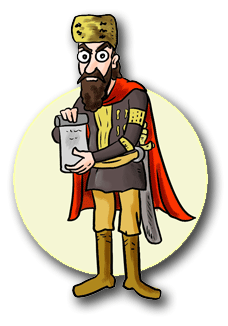Slepche – A Witness of Wonders… Its background story is fascinating
The location of one of the biggest and best preserved monastery complexes is right above the Slepche village. It was founded in the region of Demir Hisar, both the village of Slepche and the monastery have many hidden beauties. Right on the entrance in the monastery, named “St. John the Baptist”, the scars of history are easily noticeable. This monastery has been burnt three times in the past. And as many times restored.
Firstly, the blinded Samuel’s army visited the monastery in the middle century. Next, revolutionists found refuge in its chambers in the Ottoman Era. Ultimately, manufacture of weapons and arms took place in the monastery’s lodgings; during the second world war.
After the WWII the Macedonian government opened a sanatorium in the village surroundings. The peace as well as quietness were the main reasons for this decision.
This region is an inexhaustible source of beauty, history and legend
In 1014 the byzantine emperor Basil II defeated Czar Samuel’s army at the battle of Kleidion. Although, the victory didn’t please him enough, he given order to blind his opponent’s army. Reputedly, he blinded thousands of soldiers on both eyes, with the exception of every 100th soldier. They had to lead the rest of the army back home that is why they were left blind only on one eye.
Following this event, they started their journey from the mountain Belasitsa to Ohrid where their czar resided. On their way they stopped to rest in a church their czar founded in 1011. After their departure this churches developed into a monastery. Itself and the village nearby were given the name “Slepche” (meaning blind).
Eventually, the army arrived in Ohrid soon after. They were immediately brought before their leader. The horrible sight struck Samuel hard. He died of a heart attack two days after the overwhelming event.
An influential art school
Nonetheless, the Ohrid Episcopate helped the rise of the “St. John the Baptist” monastery. Straightaway, the monastery became a safe haven for many priests, teachers, artists as well as literary writers. In the 14th century it evolved into one of the most significant arts and literatures centers in Macedonia. It possessed a vast library, sizable monasticism and active scriptorium. They created extraordinary masterworks in the fields of painting, carving, sculpture as well as literature.
Under those circumstances, the monastery reached its zenith in the 16th century. Then, translators did an amazing work in recovering many books. Along with documents written on Old Slavonic language. It is engraved in history as a great carving art school. Many wood carvers from around the Balkan went there; to learn the techniques of shallow carving. They used to design church gates. As well as choir lofts.
Some of the valuable artworks are today exposed in Skopje’s Art Gallery. Famous pieces are the monastery gates and the lofts of fine carving. However, the most valuable is the Big Cross of Crucified Jesus from the 16th century.
Saved by the Hodegitria
Even at present times there is a wondrous legend from the Slepche’s monastery. Tales are told for the miraculous icon “Hodegetria”. It depicts the
Accordingly, people believed that when Luke painted the picture, the Holy Mother herself visited him and blessed it. Wherever the location of the icon; sick people report that they dream about the Mother of God. She appears in their dreams and tells them to go to the picture and pray. Afterwards these people claim their disease had vanished; and they were cured. Especially the blind.
The name Hodegetria means “she who shows the way”
If you decide to visit the monastery, the monks would tell you another story as well. It happened in the Ottaman Period. At this time of war, the Turkish military tended to destroy everything that is Christian, since their religion was the Islam. A day has come when a Turkish commander arrived in Slepche and threatened to burn down the church.
The priests begged him not to do it, and showed him the icon. A day later a 
However, to summarize, Slepche is overall a paradise for tourists. Most would be fascinated by the rich culture as well as history. Those who don’t fancy going back in time, can enjoy the great natural sights and the many restaurants. They often order a delicious trout prepared on a traditional Macedonian way.

